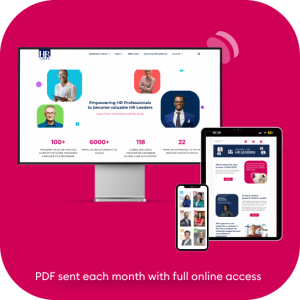Since its release, ChatGPT has quickly become one of the most popular applications worldwide. It broke several records. It reached 100 million users two months after its launch and got the title of the application with the fastest-growing user base. It has generated huge revenue at an unprecedented speed. Why did it happen?
One of the reasons is that ChatGPT is more than just for fun or leisure. It performs various work-related tasks that professionals would take hours to complete. It can plan your content strategy for a year. It can suggest keywords and write an outline, article, or social media post in seconds. It can even write code.
The best part: It’s free. Now, there is also a paid ChatGPT version that provides advanced capabilities, supports image analysis, and moves in the direction of image generation.
In short, ChatGPT is enormous. It’s practical, and many people fear it can replace them in their workplaces in the near future. Chances are you’ve already used it, and it doesn’t need an introduction to how it works.
In this article, we’ll zero in on the role of ChatGPT for HR. We’ll analyze the tasks it can perform to speed up recruitment, onboarding, and team management processes. Why do you need this information?
While you stay away from cutting-edge technologies, others already use them to the fullest extent, maximizing efficiency, reducing costs, and increasing revenue. So, don’t wait and get more done in the same amount of time.
Understanding ChatGPT: Evolution of the Tool and Its Current Capabilities in 2024
To understand how to marry HR and ChatGPT, let’s first take a closer look at what stands behind the tool and what it can do in 2024.
What is ChatGPT?

Screenshot taken on the official ChatGPT website
ChatGPT is a tool you can access from the browser. Developed by OpenAI, this AI language model has a simple interface. You can see a field to insert your message, and the magic happens under the hood. The tool comprehends the input and returns responses that are hard to distinguish from real humans. It’s like talking to a person who’s proficient in any sphere, from healthcare to law and order.
ChatGPT works on a sophisticated neural network architecture. An algorithm known as a “generative pre-trained transformer” predicts the word that will probably be used next in a chatbot’s dialogue, making it sound human.
It was trained on publicly available texts, learning to imitate the writing style of numerous authors. That’s why you can get decent-quality text that looks similar to what you’ve already seen online.
Actually, that’s a double-edged sword. While ChatGPT’s outputs are quite good, it doesn’t create something new, scraping the database to find what exists in the given topic. It may lack up-to-date information, come up with false statements and facts, and never suggest anything substantially innovative.
That’s why, having been using ChatGPT for a while, you may spot similar patterns in its texts. It makes it easier for you to find out whether a candidate employed the technology for completing a test assignment, for example.
Nevertheless, ChatGPT is a revolution among previous standard chatbots. They could only grasp keywords and return short answers. You’d be lucky if the reply would be relevant and resolve your problem. In most cases, these chatbots were too primitive and could provide information like order status on eCommerce websites or business hours on banking resources.
ChatGPT, on the other hand, can generate nuanced and context-aware responses. As such, it can perform complex HR tasks such as drafting company communications or engaging in detailed employee interactions.
Evolution of ChatGPT and Its Current Capabilities in 2024
Since its launch, ChatGPT has made considerable progress. Its primary role at first was that of a text generator with a restricted understanding of context. However, by 2024, improvements in natural language processing and machine learning algorithms will have made it a more user-friendly tool.
With the use of state-of-the-art technologies like transformer models and deep learning, ChatGPT can now comprehend and replicate text more closely to that of a human. Moreover, you can opt for custom ChatGPT development and create a solution tailored to specific HR needs. These chatbots can interact with HR administration systems, adjust to company-specific policies, and even change their language to match various corporate cultures.
Suppose you’re a global corporation. You unite people from different countries who speak diverse languages, so a custom-developed ChatGPT bot will be helpful in providing real-time translations and culturally relevant responses.
If you’re a tech company and there’s a lot of technical jargon in your daily conversations, ChatGPT could be trained to understand it and simplify technical recruitment processes. For instance, it can assess candidates’ knowledge through sophisticated questioning.
ChatGPT continues to evolve. It has come a long way from its inception, transforming from a basic text generator into a comprehensive AI tool. What will be next, especially with ChatGPT in HR? We’re lucky to witness it in real time.
Comprehensive Analysis of ChatGPT HR Applications
Now, let’s focus on specific use cases of ChatGPT for HR professionals.
1. Automated Screening and Recruitment Processes
The first application revolves around ChatGPT’s ability to scan texts. You no longer need to read resumes to determine whether the applicant fits the role. ChatGPT can do this by analyzing the information and matching qualifications with job requirements. Here is how to do it:
- Input the job description into ChatGPT and specify what you expect from the candidate, such as specific programming skills and work experience.
- Feed each resume into ChatGPT one by one. ChatGPT prompts for HR could be, “Scan this resume and evaluate how well it matches the job description for a software developer role.”

Screenshot taken on the official ChatGPT website
- ChatGPT will compare resumes with the job description, so you only need to review the top candidates who best match the job requirements based on the ChatGPT results.
2. Employee Onboarding and Training Innovations
The next step after hiring a person is onboarding. That’s where ChatGPT can also help. You may feed data about the new hire into the tool and ask it to craft individualized training plans based on the employee’s role, experience, and learning pace. As a result, you get a personalized program, ensuring maximum training efficiency.
A request could look like this: “Create a personalized onboarding plan for a [job role] with [X years] experience focusing on [specific areas].” ChatGPT can simplify the information if needed, providing examples and allegories. So, if you create a custom bot for your organization connected to your materials, you’ll receive a personal guide that improves with time.
Let’s compare how the results will differ in a free ChatGPT 3.5 version vs. a ChatGPT 4 version. The distinction between the two options may not be significant, so we’ll feature a free one further in the article. But we encourage you to try both.
ChatGPT 3.5:

Screenshot taken on the official ChatGPT website
ChatGPT 4:

Screenshot taken on the official ChatGPT website
3. Enhancing Employee Satisfaction Through Surveys and Feedback
Besides searching for people, you need to retain them. You need to spot signals of dissatisfaction in time to boost team morale and job satisfaction. The best way to do this is to send surveys to collect employee feedback on the workplace environment. Based on the results, you’ll know how to turn a negative experience into a positive one.
That’s how to use ChatGPT for HR tasks regarding crafting and analyzing employee surveys:
- Design the survey. Again, with the help of ChatGPT. Outline your goals and create commands like “Generate questions for an employee satisfaction survey focusing on workplace culture and job satisfaction.” The tool will provide you with various ideas, including rating-scale and open-ended questions.

Screenshot taken on the official ChatGPT website
- Distribute the survey. You may need to tweak the questions a bit to reflect your corporate style. After that, send them to employees.
- Analyze the responses by asking ChatGPT to do it: “Analyze these responses and summarize the main concerns and highlights regarding workplace culture.”
- Generate a report summarizing the findings: “Based on the survey analysis, generate a report outlining key employee satisfaction trends and potential areas for improvement.”
- Develop strategies to address the identified weaknesses. ChatGPT can assist in this phase, too, by suggesting action plans or initiatives based on the survey results. For example, do most of the employees express concern about poor work-life balance in the company? ChatGPT can generate ideas on initiatives to improve this aspect.
4. Performance Feedback, Goal Setting, and Mentoring
Another aspect of HR work is performance management. ChatGPT in HR can answer the question, “How do employees perform?” Among its capabilities are as follows:
- Drafting constructive feedback. An Example request could be, “Help me draft feedback for an employee who has excelled in project management but needs improvement in time management.”;

Screenshot taken on the official ChatGPT website
- Setting achievable goals for teams. For instance, “Set SMART objectives for a mid-level marketing manager who wants to advance to a senior role”;
- Offering career advice and professional development tips based on an employee’s career trajectory and performance history.
Allow employees to interact with the tool themselves. They may ask specific questions like “How can I improve my leadership skills for a management role?” ChatGPT will provide a personalized guide with tips, resources, and time estimates.
5. Conflict Resolution and Employee Assistance
When something goes wrong, and the situation is heating up, ChatGPT for conflict resolution comes into play. This app stands out from the rest because you can talk to it as if to a person. So, you can ask it for advice regarding a conflict.
Consider this case, “There’s a conflict between two team members regarding project responsibilities and communication breakdown. What are some effective resolution strategies?”

Screenshot taken on the official ChatGPT website
ChatGPT will try to express some empathy (considering it’s a robot, not a human) and offer resolution strategies. You can go further and ask ChatGPT to draft scripts for mediation sessions.
It can generate a list of internal and external support options, such as:
- counseling services;
- stress management workshops;
- employee assistance programs.
Keep in mind that it can come up with unexisting resources, so double-check their availability.
6. ChatGPT HR Content Creation: Job Descriptions and Documentation
ChatGPT employs generative AI. So, content generation is its main capability. HR professionals frequently need to create texts, be it job descriptions or internal documents, or update them to meet the corporate style and changed requirements. That’s where ChatGPT can find its application in HR.
Let’s assume you need a job description. Collect as many details as possible about who you’re looking for and feed them to ChatGPT. A prompt may be as simple as “Create a job description for a [job title] role focusing on [key skills and responsibilities].

Screenshot taken on the official ChatGPT website
Then comes generating knowledge base articles. With ChatGPT in HR, you can write and tailor them, ensuring employees can access the latest information and policies. Large enterprises with complex documentation management may find this capability beneficial.
For instance, you may ask, “Revise this draft to be more concise and engaging”, and the tool will refine it. ChatGPT supports texts of various lengths. You may create a 100-word email announcing a new employee wellness program or a 1,500-word article about your company procedures.
Key Takeaways
So, what is ChatGPT for HR? It’s where efficiency and personalization reach a new height. If you’re stuck with writer’s block or can’t find a solution to a problem, this tool can quickly inspire you. The tasks it can perform are almost endless:
- recruiting;
- onboarding;
- employee engagement;
- policy development, etc.
It’s an indispensable tool, a reliable helper. Here’s how to use ChatGPT in HR:
- analyze vast amounts of data;
- understand and generate human-like text;
- get contextually relevant responses, to name a few applications.
Looking ahead, the integration of ChatGPT and similar AI technologies in HR is unavoidable. Some people fear AI will take their jobs; others think it’ll let them work fewer days a week. But what we can say for sure now is that AI will continue to progress. And if you want to keep up with it, it’s wise to embrace such solutions as ChatGPT for HR sooner rather than later.
Image credit: Unsplash
Art Malkovich is co-founder and Chief Executive Officer of Onilab, a full-service eCommerce agency. Being an experienced developer and project manager, he keeps up to date with the latest trends in headless commerce, online store development and migration, SaaS, and UX/UI design.










